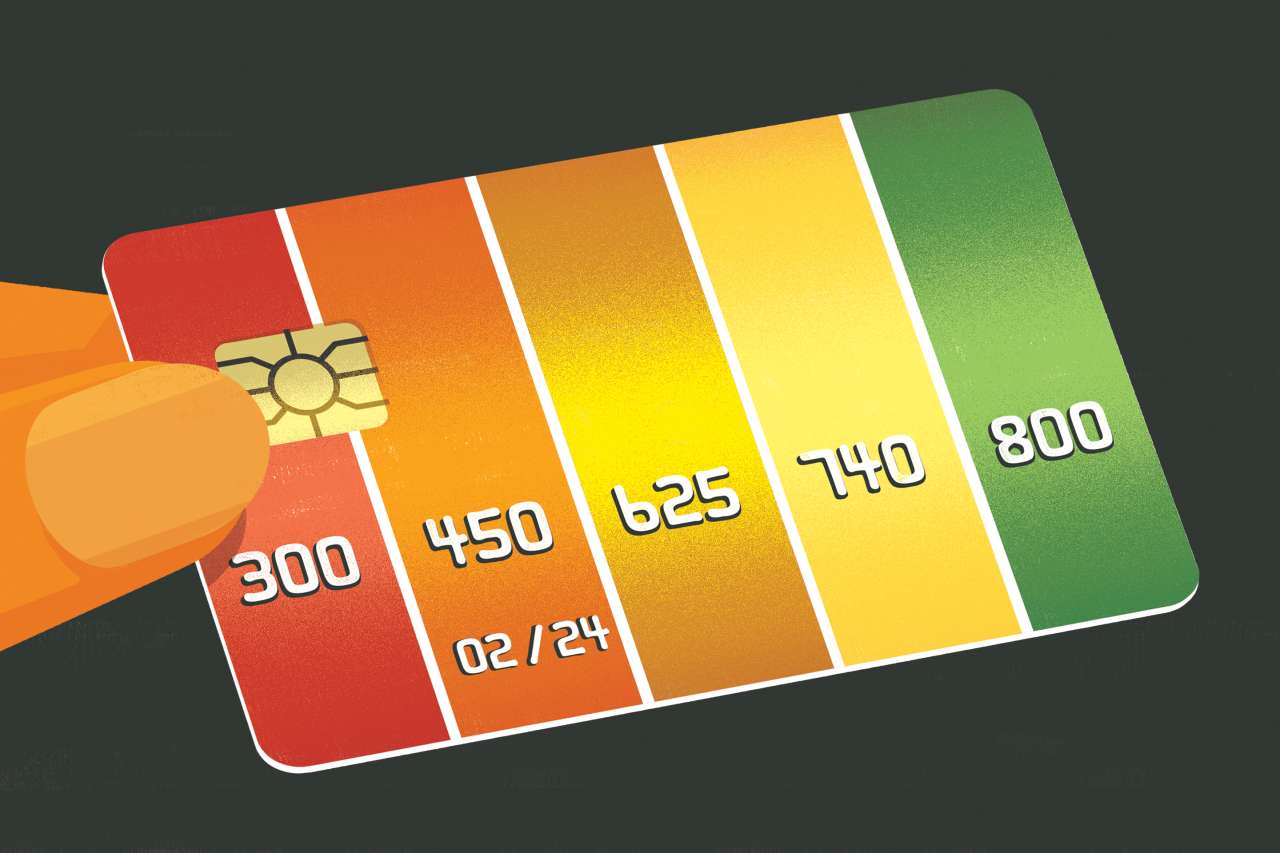

Finance
What Is Theta Stocks
Published: January 18, 2024
Discover the power of Theta Stocks and how it can revolutionize your finance strategy! Unleash the potential of your investments and optimize your returns today.
(Many of the links in this article redirect to a specific reviewed product. Your purchase of these products through affiliate links helps to generate commission for LiveWell, at no extra cost. Learn more)
Table of Contents
Introduction
Welcome to the world of finance where the markets are ever-changing, and investors are constantly seeking new ways to make profitable trades. One popular strategy amongst seasoned traders is theta trading, specifically focusing on theta stocks. In this article, we will explore what theta stocks are, how theta is calculated, and the impact of theta on options pricing. We will also delve into different strategies for trading theta stocks and discuss the risks and caveats involved in this approach.
Theta stocks, also known as time decay stocks, are equities that have options attached to them. These options have a time value component known as theta, which measures the rate of decay in the value of an option with each passing day. This factor becomes crucial for traders looking to capitalize on changing market conditions and time decay of options.
To understand theta stocks better, it is essential to grasp the concept of theta itself. Theta is one of the four main Greeks used in options trading, alongside delta, gamma, and vega. While delta measures the sensitivity of an option’s price to changes in the underlying stock, gamma measures the change in delta, and vega measures the sensitivity to changes in implied volatility, theta measures the time decay of an option.
Theta is calculated by determining the rate at which an option loses value over time. It is represented as a negative number because options lose value as time passes. The higher the theta value, the faster the option loses its value. For instance, an option with a theta of -0.05 will lose $0.05 in value each day.
The impact of theta on options pricing is significant. As an option approaches its expiration date, the rate of time decay accelerates. This means that the option’s value decreases at a faster pace, making it less attractive for investors. The closer to expiration, the higher the theta becomes, resulting in diminishing returns for the option holder.
Traders who specialize in theta stocks focus on exploiting this time decay factor to generate profits. They buy options with a low theta value and sell them before the time decay accelerates significantly. By doing so, they aim to capture the premium decrease caused by theta, capitalizing on the declining value of the option over time.
There are several strategies that traders employ when trading theta stocks. One popular approach is the calendar spread, where an investor simultaneously buys and sells options with different expiration dates. Another strategy is the iron condor, which involves selling both a call spread and a put spread on the same underlying stock. These strategies take advantage of theta decay by carefully selecting and managing option trades.
However, it is important to note that trading theta stocks carries certain risks and caveats. While theta can work in favor of a trader, it can also erode the value of an option quickly if market conditions change unexpectedly. Additionally, theta decay tends to accelerate more rapidly as the option approaches expiration, which could lead to potential losses if the trade is not managed effectively.
In summary, theta trading in stocks can be a lucrative strategy for experienced investors who understand the intricacies of options and time decay. By capitalizing on the declining value of options over time, traders can potentially generate profitable trades. However, it is crucial to carefully consider the risks involved and implement appropriate risk management strategies when trading theta stocks.
Definition of Theta Stocks
Theta stocks, also known as time decay stocks, are equities that have options attached to them. These options have a time value component known as theta, which measures the rate of decay in the value of an option with each passing day.
Theta is one of the four main Greeks used in options trading, alongside delta, gamma, and vega. While delta measures the sensitivity of an option’s price to changes in the underlying stock, gamma measures the change in delta, and vega measures the sensitivity to changes in implied volatility, theta measures the time decay of an option.
The concept of theta is based on the principle that options have an expiration date. As an option approaches its expiration date, its time value decreases, which affects the overall option price. Theta quantifies how much an option’s price will decrease as each day passes.
Theta is expressed as a negative number because options lose value as time passes. The higher the theta value, the faster the option loses its value. For example, an option with a theta of -0.05 will lose $0.05 in value each day. Theta is typically measured in dollars or cents per day.
Theta decay occurs because as time passes, there is less time for the option to move in the desired direction and become profitable. This time decay is also known as the erosion of extrinsic value. It is important to note that theta primarily affects options with longer expiration dates, as they have more time for decay to occur.
Theta stocks are attractive to traders who specialize in options because they offer an opportunity to profit from time decay. By buying options with a low theta value and selling them before the time decay significantly impacts their value, traders aim to capture the premium decrease caused by theta.
However, it is essential to understand that theta is not the only factor that influences options pricing. Other factors such as volatility, interest rates, and the underlying stock’s price movement also play a role. Traders need to consider these factors in conjunction with theta when evaluating theta stocks and developing trading strategies.
In summary, theta stocks are equities that have options attached to them, and theta measures the rate of decay in the value of an option with each passing day. Traders who specialize in theta stocks aim to take advantage of time decay by buying options with a low theta value and selling them before the time decay accelerates, generating profits from the declining option value over time.
How Theta is Calculated
Theta, one of the main Greeks used in options trading, measures the rate of decay in the value of an option with each passing day. It is calculated by determining the rate at which an option loses value over time. Understanding how theta is calculated is crucial for traders looking to capitalize on time decay in options trading.
Theta is expressed as a negative number because options lose value as time passes. The higher the theta value, the faster the option loses its value. For example, an option with a theta of -0.05 will lose $0.05 in value each day.
To calculate theta, several factors influence the equation. The primary factors include the time to expiration, the option’s price, the risk-free interest rate, and the volatility of the underlying stock.
The time to expiration is a significant factor in theta calculation. As an option approaches its expiration date, the time value component decreases rapidly, leading to a higher theta value. This signifies that the option is losing value at an accelerated rate with each passing day.
The option’s price also influences theta calculation. Generally, the higher the price of an option, the higher the theta value. This is because higher-priced options have a larger extrinsic value component, which decays over time.
The risk-free interest rate also affects theta calculation. As the risk-free interest rate increases, theta tends to increase as well. This is because the opportunity cost of holding an option decreases with higher interest rates, leading to a faster rate of time decay.
Volatility is another crucial factor in theta calculation. Higher volatility generally results in a higher theta value. This is because higher volatility increases the likelihood of price movements in the underlying stock, accelerating the time decay of the option.
Option pricing models, such as the Black-Scholes model, take into account these factors and use complex mathematical formulas to calculate theta. These models consider the interplay between the various factors mentioned above to arrive at an accurate estimate of theta for a given option.
It is important to note that theta calculation is just an estimation and is subject to various assumptions and market conditions. Real-world theta values may deviate from calculated values due to factors such as changes in volatility, interest rates, or unexpected events affecting the underlying stock.
In summary, theta is calculated by determining the rate at which an option loses value over time. Factors such as time to expiration, option price, risk-free interest rate, and volatility of the underlying stock influence theta calculation. Option pricing models utilize these factors to estimate theta values. However, it is important for traders to recognize that theta calculation is an estimation and may vary based on market conditions and other unforeseen factors.
Impact of Theta on Options Pricing
Theta, also known as time decay, plays a critical role in options pricing. It measures the rate of decay in the value of an option with each passing day. Understanding the impact of theta on options pricing is essential for traders looking to navigate the options market effectively.
As an option approaches its expiration date, the rate of time decay accelerates. This means that the option’s value decreases at a faster pace, making it less attractive for investors. The closer to expiration, the higher the theta becomes, resulting in a more significant impact on the option’s price.
Theta works against option buyers as it eats away at the time value portion of the option premium. Therefore, all else being equal, the value of an option will decrease with each passing day due to theta decay.
The impact of theta is more substantial for options with longer expiration dates. These options have more time for decay to occur, resulting in higher theta values. Shorter-term options, such as those expiring within a few days or weeks, typically have lower theta values because they have less time for significant time decay to affect their value.
Theta also takes into account the underlying stock’s volatility. Higher volatility leads to higher theta values as there is a greater probability of significant price movements in the underlying stock, increasing the likelihood of the option expiring worthless.
Another key factor to consider is the strike price of the option. Theta is typically more significant for at-the-money options, meaning the strike price is close to the current market price of the underlying stock. In-the-money options and out-of-the-money options generally have lower theta values.
Traders who sell options, also known as option writers, can benefit from theta decay. By selling options with high theta values, they can collect premium and take advantage of the time decay. However, they must be mindful of the potential risks and obligations associated with selling options.
It is important for traders to understand the impact of theta when developing options trading strategies. Traders who are looking for quick trades or expect a significant move in the underlying stock may prefer shorter-term options with low theta values. On the other hand, those who are expecting a more gradual price movement or want to take advantage of time decay may opt for options with higher theta values.
In summary, theta has a significant impact on options pricing. It measures the rate of decay in the value of an option with each passing day, becoming more pronounced as the option approaches expiration. Higher volatility, at-the-money strike prices, and longer expiration dates contribute to higher theta values. Traders must consider theta when evaluating options and developing trading strategies to maximize their chances of success in the options market.
Strategies for Trading Theta Stocks
Trading theta stocks involves capitalizing on the time decay of options to generate profits. Traders employ various strategies to take advantage of this phenomenon. Here are some popular strategies used when trading theta stocks:
- Calendar Spread: Also known as a horizontal spread, the calendar spread strategy involves simultaneously buying and selling options with different expiration dates. Traders aim to take advantage of the time decay disparity between the two options. By buying an option with a longer expiration date and selling an option with a shorter expiration date, traders can potentially profit as time passes and the option with the shorter expiration date loses value more rapidly.
- Iron Condor: The iron condor strategy is a combination of selling both a call spread and a put spread on the same underlying stock. Traders create a range, or “the condor”, within which they expect the stock price to remain during the duration of the options. By collecting premium from selling the spreads, traders can profit from time decay as long as the stock remains within the designated range.
- Vertical Spread: The vertical spread strategy involves buying and selling options of the same type (either calls or puts) with different strike prices but the same expiration date. This strategy allows traders to benefit from the time decay of the option they sold while limiting their potential risk with the option they bought. Traders can choose between a bearish vertical spread, where they expect the underlying stock to decrease in price, or a bullish vertical spread, where they anticipate an increase in the stock price.
- Covered Call Writing: Covered call writing is a strategy where traders sell call options on stocks they already own. By selling call options, traders collect premium and benefit from the time decay of the options they sold. If the stock price remains below the strike price of the call options at expiration, the options expire worthless, and the trader keeps the premium collected. This strategy can generate additional income and potentially reduce the cost basis of the underlying stock.
- Bull Put Spread: The bull put spread strategy involves selling a put option with a higher strike price and simultaneously buying a put option with a lower strike price. This strategy is used when traders have a moderately bullish outlook on the underlying stock. The goal is to profit from time decay as the options they sold lose value, and the stock price remains above the higher strike price of the put option.
These are just a few examples of the strategies utilized when trading theta stocks. Each strategy has its own set of advantages and considerations, and it is important for traders to understand the nuances of each approach before implementing them in their trading activities. It is also crucial for traders to consider their risk tolerance and investment goals when selecting the most suitable strategy.
Ultimately, successful theta trading requires a thorough understanding of options, the concept of time decay, and the ability to execute strategies effectively. Traders should conduct proper research, analyze market trends, and continuously assess and adjust their positions to maximize their potential for profits while mitigating risks.
Risks and Caveats of Theta Trading
While theta trading can be a lucrative strategy for generating profits from time decay, it is important for traders to understand and be aware of the risks and caveats involved. Here are some key considerations when engaging in theta trading:
- Market Volatility: Theta trading relies on the assumption that the underlying stock will exhibit relatively stable price movements. If the market becomes highly volatile or experiences unexpected news or events, it can disrupt the expected time decay patterns and lead to significant losses. Traders must be prepared for potential market fluctuations and have risk management strategies in place.
- Option Expiration: As an option approaches expiration, the time decay accelerates, and its value erodes more rapidly. Traders must be careful when holding options near expiration as the decline in value becomes more pronounced. Timing is crucial, and traders need to manage their positions effectively to avoid being stuck with options that have minimal value.
- Commissions and Costs: Regular trading activities incur commissions and other costs, such as bid-ask spreads. These costs can eat into the potential profits generated from theta trading. Traders need to consider these expenses and factor them into their calculations to ensure that the potential gains outweigh the costs associated with executing the trades.
- Limited Profit Potential: Theta trading is a strategy that seeks to capture the time decay of options. However, this approach inherently limits the profit potential. The trader’s gain is limited to the premium received from selling options or the price difference between the options bought and sold. Traders must keep their profit expectations realistic and consider the potential returns in relation to the risks involved.
- Options Assignment: When selling options, there is the risk of assignment if the options are in-the-money at expiration. This means that the trader may be obligated to fulfill the terms of the contract, such as buying or selling the underlying stock. Traders need to understand their obligations and have a plan in place for handling potential assignments.
- Complexity and Understanding: Theta trading and options in general can be complex financial instruments. Traders need to have a solid understanding of options, including their pricing dynamics, Greeks, and the strategies employed. Lack of knowledge and experience can lead to costly mistakes. Traders should invest time in education, research, and practice before actively engaging in theta trading.
It is crucial for traders to thoroughly assess their risk tolerance, financial situation, and investment goals before embarking on theta trading. Developing a well-defined trading plan, implementing risk management strategies, and continuously monitoring positions can help mitigate the associated risks. Traders should also consider consulting with a financial advisor or seeking guidance from experts to navigate the complexities of options trading.
In summary, while theta trading can be a profitable approach, it is not without risks. Market volatility, option expiration, costs, limited profit potential, options assignment, and the complexity of options trading are important factors to consider. Traders must exercise caution, conduct thorough research, manage risks effectively, and continuously educate themselves to succeed in theta trading.
Case Studies: Successful Theta Trading Examples
Examining successful theta trading examples can provide valuable insights into the potential profitability of this strategy when executed effectively. Here, we will explore two case studies that highlight successful theta trading:
Case Study 1: Calendar Spread on XYZ Corporation
In this case, let’s consider an options trader looking to capitalize on time decay through a calendar spread strategy on XYZ Corporation. The trader purchases a call option with a longer expiration date (60 days) and simultaneously sells a call option with a shorter expiration date (30 days) but with the same strike price. The trader believes that the stock price will remain relatively stable or experience minimal fluctuations over the next 30 days.
As time passes, the shorter-term option loses value at a faster rate due to accelerated theta decay. The trader anticipates this and plans to close the position before the theta decay becomes significant. Suppose the trader initially collects a net premium of $2.00 from the sale of the shorter-term option and pays a net premium of $3.50 for the longer-term option.
If, after 30 days, both options expire worthless, the trader keeps the collected premium of $2.00 as profit, resulting in a 57% return on investment ($2.00 / $3.50) within the 30-day timeframe. This profit is generated primarily due to the time decay of the shorter-term option, which far exceeds the decay of the longer-term option.
Case Study 2: Iron Condor on ABC Corporation
Another successful theta trading example is the implementation of an iron condor strategy on ABC Corporation. The trader sells both a call spread and a put spread on the same underlying stock with the belief that the stock price will remain within a specific range over a given period.
In this scenario, the trader sells a call option with a strike price of $50 and simultaneously sells a put option with a strike price of $40. Additionally, the trader buys a call option with a higher strike price of $55 and buys a put option with a lower strike price of $35 as protection against potential losses.
If the stock price remains within the specified range until expiration, all options will expire worthless, and the trader retains the premium collected from selling both spreads. The time decay of the options sold contributes significantly to the trader’s profitability.
By effectively managing risk and selecting appropriate strike prices and expiration dates, the trader can generate a profit from the premiums collected. However, it is crucial to monitor the position closely and be prepared to adjust or close the position if the stock price moves beyond the desired range.
These case studies exemplify successful theta trading strategies, but it’s important to note that every trade is subject to unique market conditions and individual trade management. These examples serve to illustrate the potential profitability of theta trading when executed with proper analysis, risk management, and timing.
Traders should conduct thorough research, employ appropriate strategies, and continually assess and adjust their positions based on the evolving market conditions to increase their chances of success in theta trading.
Conclusion
Theta trading, focusing on theta stocks, offers a unique strategy for traders to profit from time decay in options. By understanding the impact of theta on options pricing and implementing appropriate strategies, traders can potentially generate consistent profits in the options market.
Theta stocks, also known as time decay stocks, have options attached to them, and the theta component measures the rate of decay in an option’s value with each passing day. Theta is influenced by factors such as time to expiration, option price, risk-free interest rate, and volatility of the underlying stock.
Successful theta trading requires a combination of knowledge, experience, and effective strategy implementation. Traders can employ various strategies such as calendar spreads, iron condors, vertical spreads, covered call writing, and bull put spreads to take advantage of time decay and generate profits.
However, it is essential for traders to recognize the risks and caveats associated with theta trading. Market volatility, option expiration, costs, limited profit potential, options assignment, and the complexity of options trading are factors that must be carefully considered. Traders should conduct thorough research, implement risk management strategies, and continuously educate themselves to minimize potential risks and maximize returns.
Case studies of successful theta trading examples illustrate the potential profitability of this strategy when executed effectively. These examples emphasize the importance of disciplined trade management, proper risk assessment, and timing to generate profits from time decay.
In conclusion, theta trading can be a lucrative strategy for experienced traders seeking to capitalize on time decay in options. By understanding the dynamics of theta, implementing appropriate strategies, and managing risks effectively, traders can potentially achieve consistent profits while navigating the complexities of the options market.














